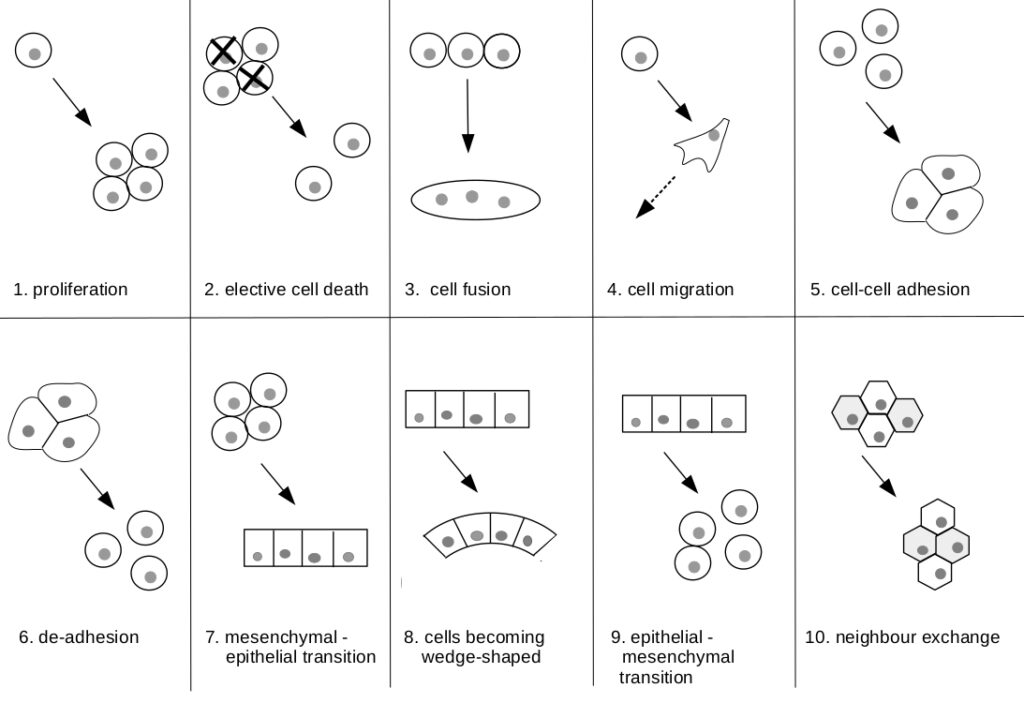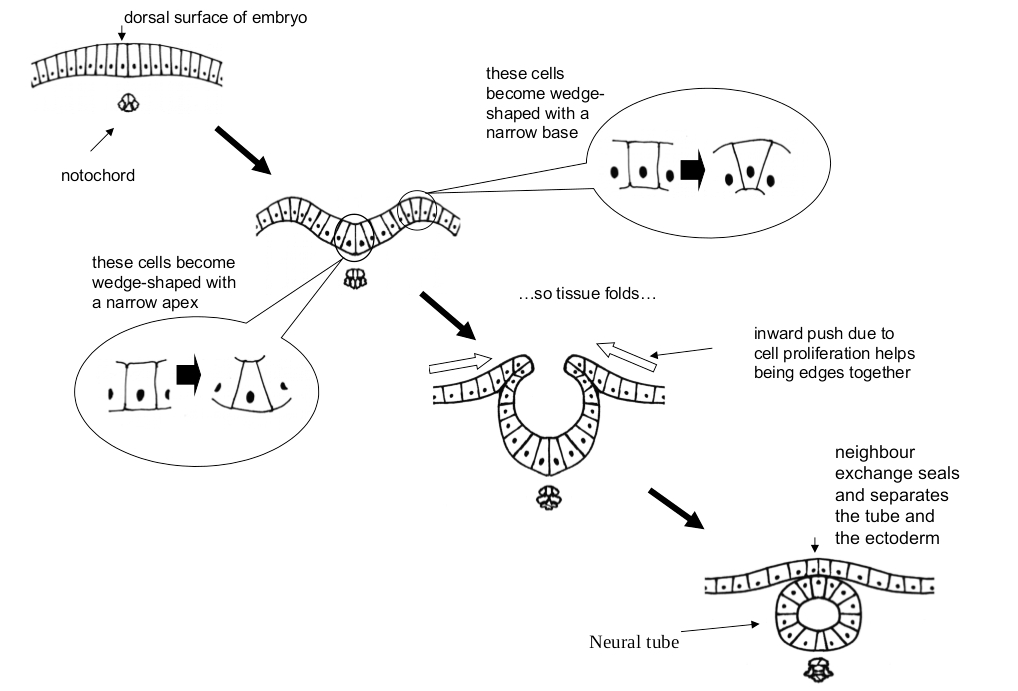Morphogenesis means ‘the creation of shape’. In a biological context, it is a term that encompasses all processes that generate the intricate anatomy of an adult organism from the relative simplicity of a fertilized egg.
While the total number of morphogenetic events in the development of a human body is vast, several commentators [1, 2, 3, 4] have pointed out that a large proportion of them seem to be explainable by a small number of basic morphogenetic mechanisms. These include;
- cell proliferation
- elective cell death (‘cell suicide’)
- cell fusion
- cell migration (usually guided in some way)
- cell-to-cell adhesion
- cell-to-cell de-adhesion
- mesenchymal-to-epithelial transition (loose cells become sheets of connected cells)
- cells becoming wedge-shaped (if this happens within a sheet; the sheet bends)
- epithelial-to-mesenchymal transition (coherent sheets of cells break up into disconnected cells)
- neighbour exchange

Real morphogenetic events use these basic mechanisms in defined orders. For example, formation of the neural tube (future brain and spinal cord) from the ectoderm layer of the back uses cells becoming wedge-shaped, cell proliferation, then neighbour exchange;

Our understanding of morphogenesis comes mainly from observation, which generates hypotheses, and disruption experiments in which a mechanism though to be important is disrupted in some way, to see if the morphogenesis itself is then disrupted as predicted.
A much better test that we have understood how morphogenesis works is to try to create it from scratch using the techniques of synthetic biology – a method of working known as Synthetic morphogenesis or Synthetic morphology. One of the CyGenTiG team was the author of a paper that set out an agenda for this, back in 2008 [4]. The basis of the technology is explained in the accompanying page, Synthetic morphogenesis.
Gaining an ability to drive morphogenesis synthetically would also significantly enhance the power of tissue engineering, a medically important technology in which Europe plays ah important role.
References:
1. Trinkhaus JP (1984) Cells into Organs: the forces that shape the embryo. Prentice-Hall.
2. Davies JA (2013) Mechanisms of Morphogenesis. Elsevier, Hardback (Available from here).
3. Wolpert L (2002) Principles of Development. Oxford University Press.
4. Davies JA. (2008) Synthetic morphology: prospects for engineered, self-constructing anatomies. J Anat. 2008 Jun;212(6):707-19. doi: 10.1111/j.1469-7580.2008.00896.x.